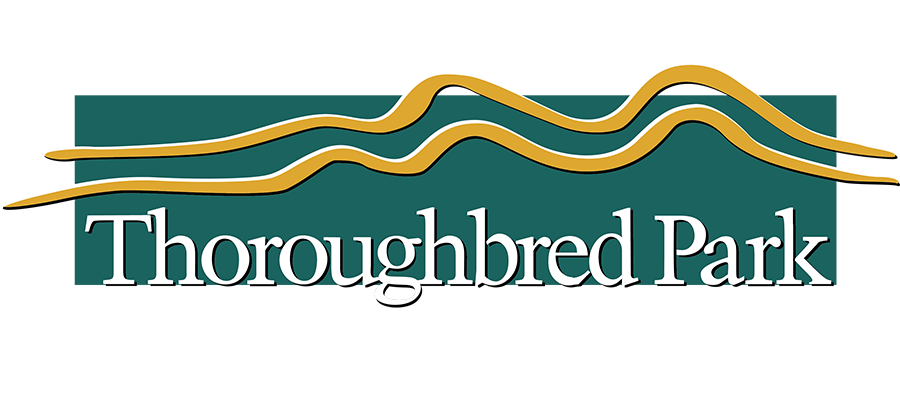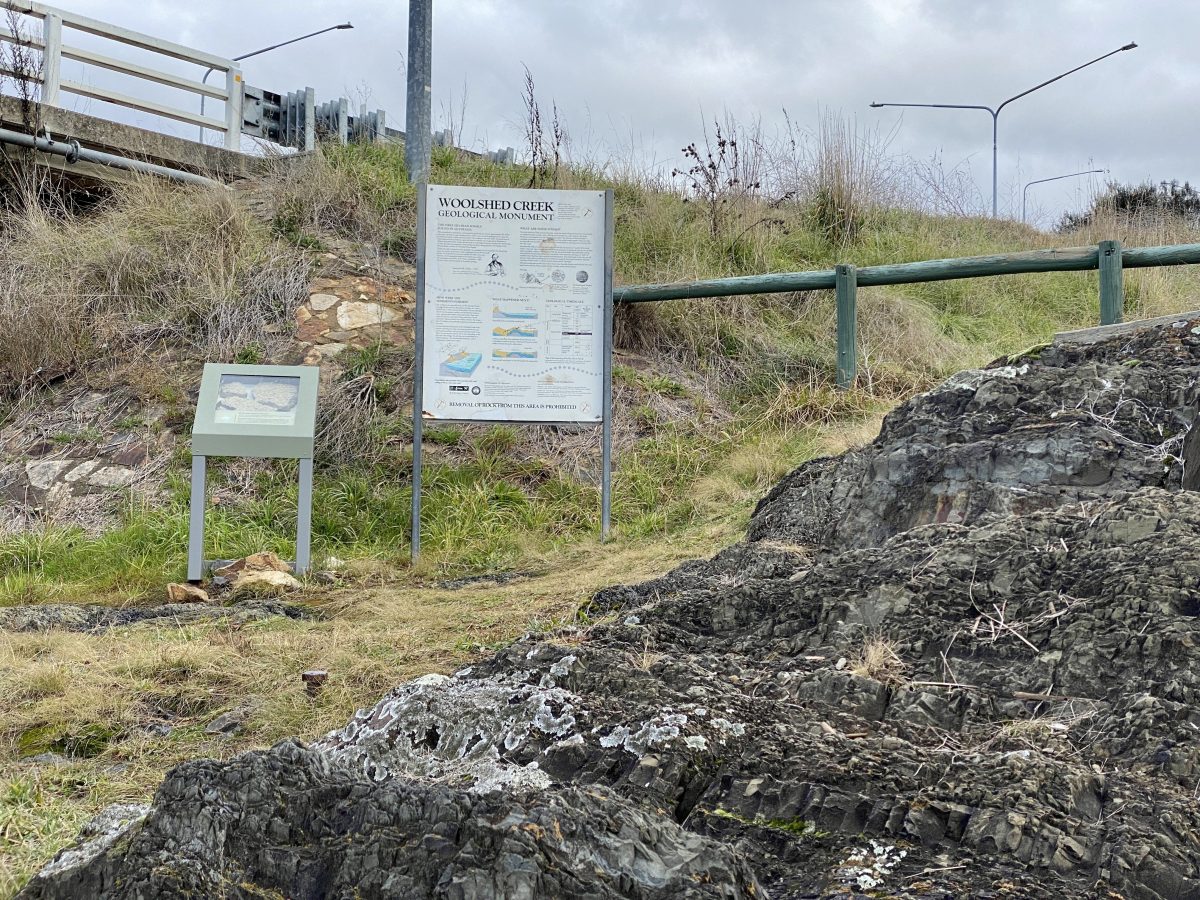
The famous fossil site is accessible via General Bridges Drive and Hopkins Drive in Duntroon. Photo: James Coleman.
The National Dinosaur Museum in Gold Creek Village will be celebrating National Fossil Day slightly late on Saturday, 1 July, with kids granted free entry for fossil hunts, up-close encounters with real dinosaur bones, face painting and, to top it all off, balloons.
But that’s not the only local connection to fossils worth exploring for the actual National Fossil Day on Monday, 26 June.
It’s a muddy creek bed overlaid with two busy roadways today, but in the 1840s, Woolshed Creek near the Royal Military College at Duntroon was the talk of the whole scientific town. It turns out it was bursting with traces of marine animals from long ago.
Dr Patrick Smith is a palaeontologist from the Australian Museum in Sydney but travelled to Canberra to do a lot of the research for his PhD, including supplying samples to Geoscience Australia in Symonston.
He says the man who put Canberra on the international fossil map was headmaster, preacher and geologist William Branwhite Clarke.
“At the time, he was travelling up and down the east coast of Australia because he wore a lot of different hats,” Dr Smith says.
“One was headmaster of a group that had a school in the area, the other was reverend at Saint Thomas’s Anglican Church in North Sydney, and he was also well regarded as a geologist because he had trained in geology at Cambridge University in England.”
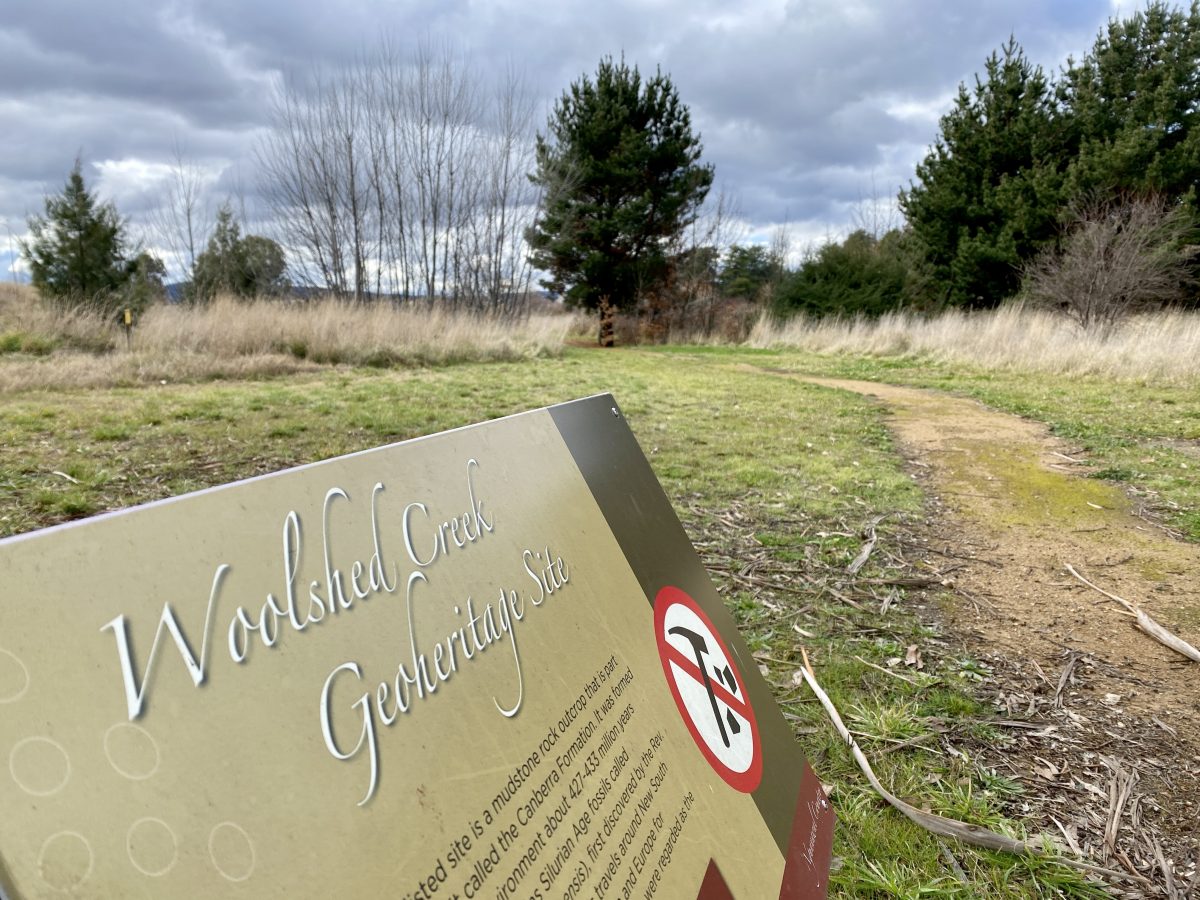
The path to Woolshed Creek. Photo: James Coleman.
After 1840, he was enlisted by the NSW Government to get the lay of the land “to understand what resources were available” where the ACT is today. As fate had it, four years later, Clarke visited a nearby friend and early property mogul Robert Campbell at his estate of Duntroon.
“He went out one day to visit one of the local creeks, presumably to look at rocks as part of his geological investigations, and managed to find all these fossils,” Dr Smith says.
“These fossils” mainly included brachiopods – which look like shells but were actually once living creatures – as well as several different species of trilobites, corals and bryozoa.
Dr Smith says these all hail from the middle of the Silurian period between 430 and 427 million years ago when south-eastern Australia was under a lot of seawater.
“Woolshed Creek is one of the biggest sites in terms of the history of understanding geology on the Australian continent. Because, at the time, people just didn’t know how old the southern continents were. These fossils gave the first evidence that, yes, the southern continents were just as old as those in the northern hemisphere.”
As a devout Anglican, Clarke knew about the Biblical account of the Earth’s creation by God in six days, but he was also keenly interested in science. Dr Smith says the two views were not considered entirely at odds at the time.
“There was less harsh rhetoric between the two groups in the past because everyone was just earnestly seeking information,” Dr Smith says.
“Clark honestly believed the information he was discovering was promoting his view of God.”
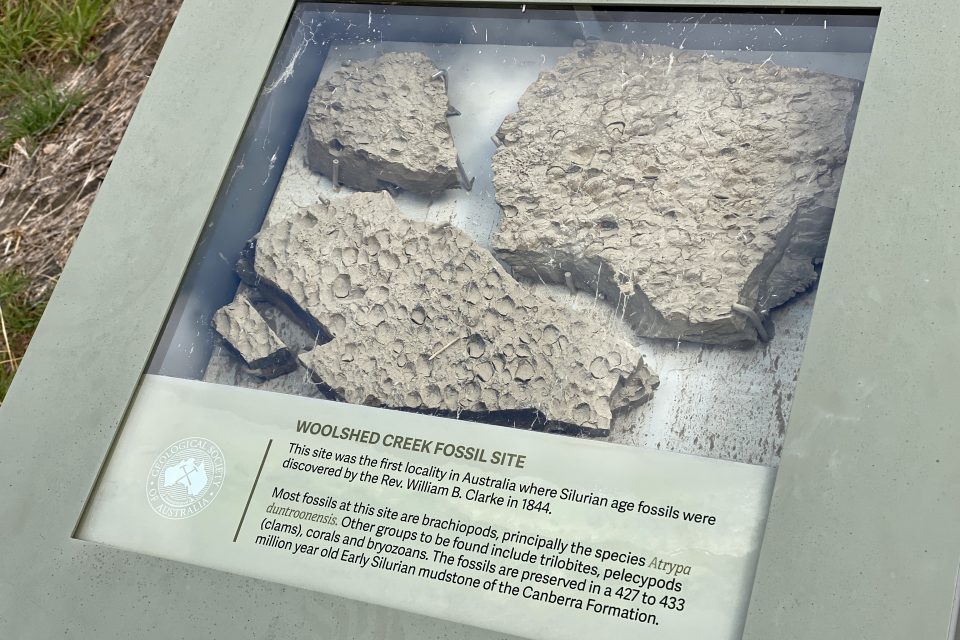
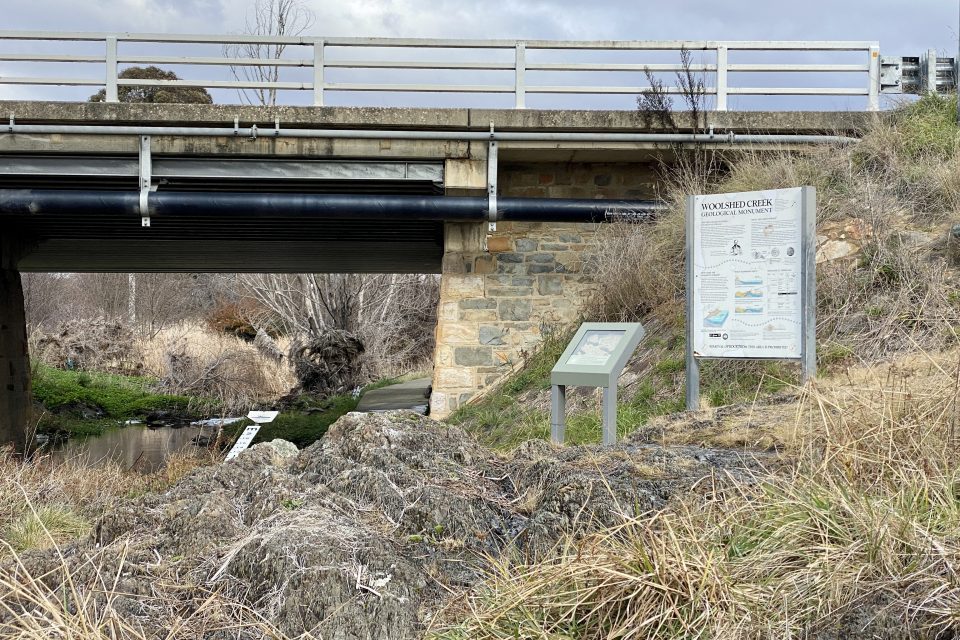
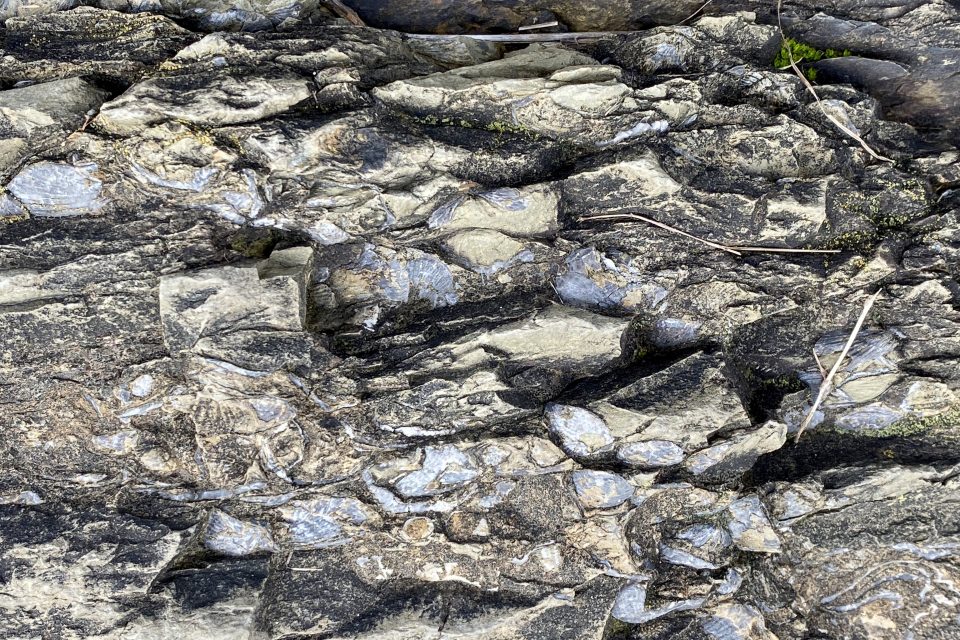
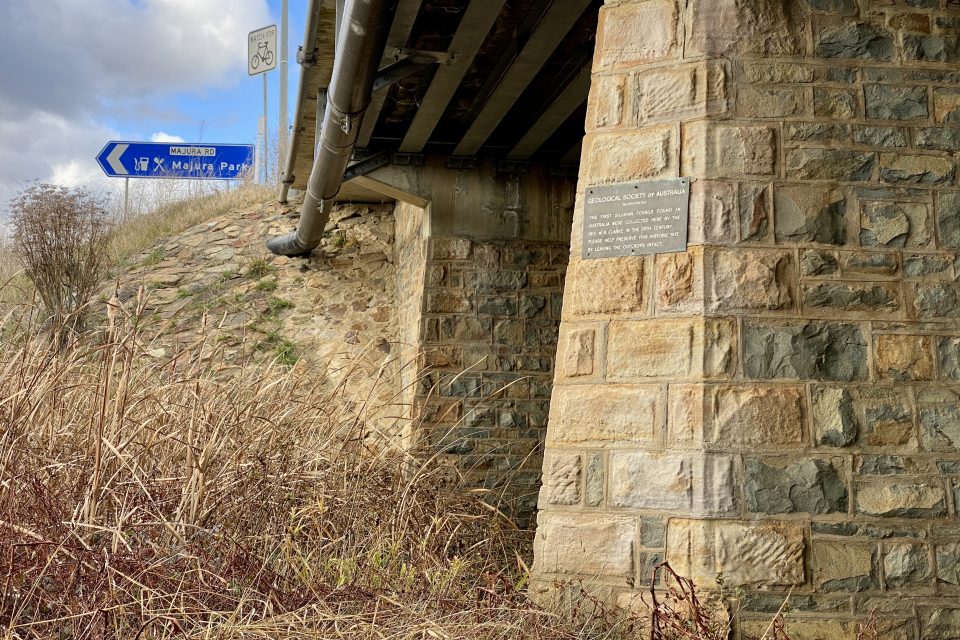
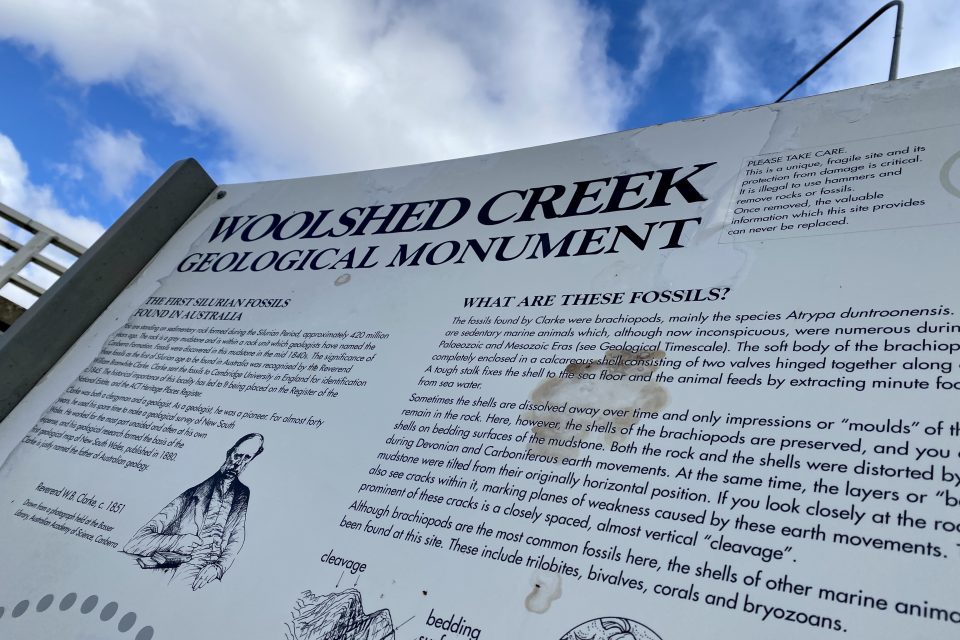
All these years later, the work at Woolshed Creek is far from over.
Local researcher Desmond Leslie Strusz had a lot to do with the fact it was protected from damage by road works and construction in the area, and Dr Smith says there is still “a lot of active research to be done on this stuff”.
“Although it’s an old site, some fossil forms hadn’t been fully described yet. And there are still undescribed species potentially still to be found in the rocky pages of history.”
It’s also open to visitors via General Bridges Drive and Hopkins Drive in Duntroon. From a small dirt car park, it’s a short 200-metre walk to near where the Monaro Highway passes over Fairbairn Avenue. Several fossils are preserved inside display cases at the site and presented alongside plaques explaining their history and significance.
Another excursion for 1 July, maybe?
